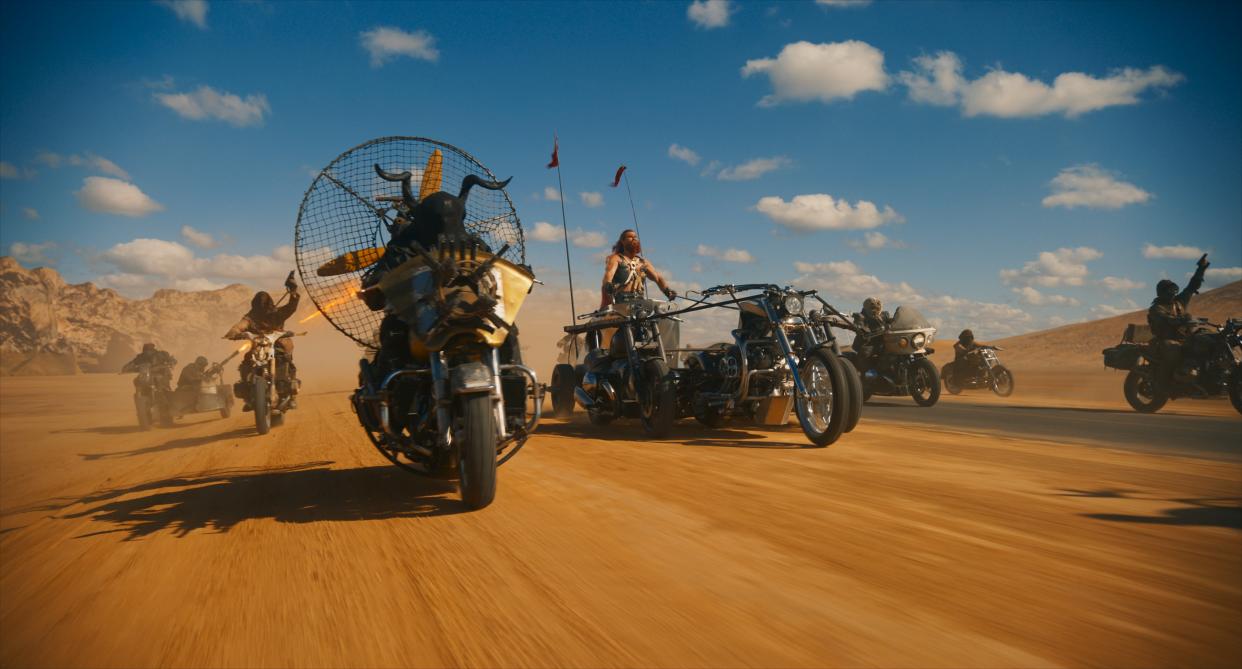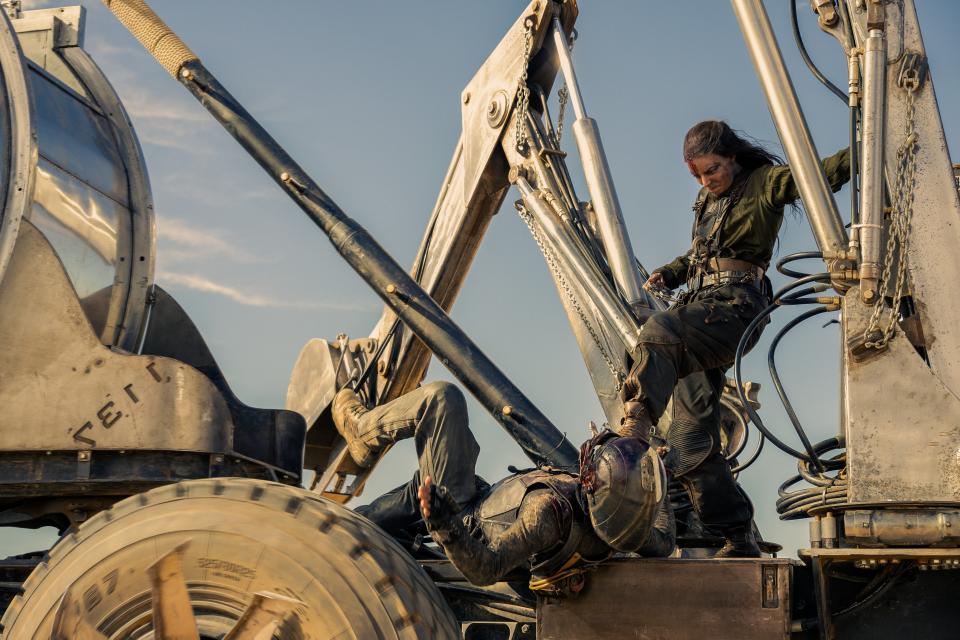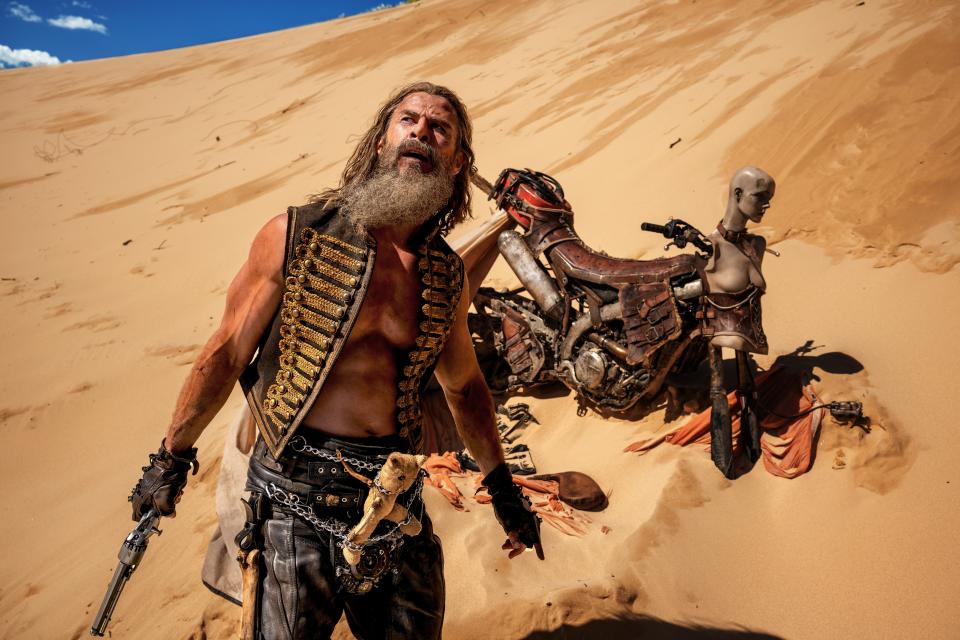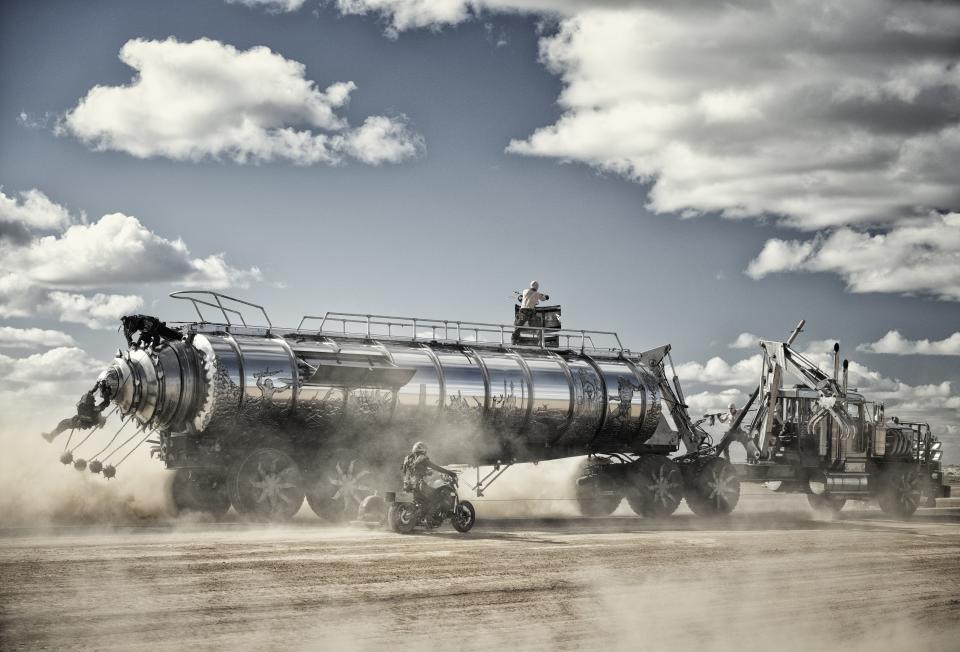On Location: 'Furiosa' Hurtles Through the Outskirts of the Australian Outback

Courtesy of Warner Bros. Pictures
The shoot for 2015 instant-classic Mad Max: Fury Road was famously arduous, in large part due to a remote Namibian desert shooting location with extreme elemental trials that only served to further the film’s high-wire madness. For this year’s prequel, Furiosa: A Mad Max Saga, things were a touch easier as production returned to the Australian setting of the original Mad Max trilogy. The Outback, while not quite the desolate landscape of the Namib (we are talking a difference of a few blades of grass), is still red hot for apocalypse action.
Returning from the previous film are such wonderful settlements as Gastown and Bullet Town, between which the call sheet relentlessly races, as well as the paradisal Green Place of Many Mothers from which our titular heroine hails. But this time they’ve been built down under. Aussie production designer Colin Gibson is also back, now on his New South Wales home turf, and he sat down with us to take us behind the scenes.

FURIOSA
Where in the world is Furiosa?
As much as I would have loved to have gone back to Namibia, and hurtled through real wasteland vistas, the producers said that there was no way, and that we were definitely shooting in Australia. The main big rig against the mortar fire sequence was shot in a high, very, very flat country area, to the west of New South Wales in Australia. Not quite in the Outback, but a very, very, very flat space. Which was great for people who were flying along in a truck with cranes suspended off them doing 50 to 60 miles per hour along a roadway that we specifically graded and set and put in. This five-mile stretch of flat highway in, hey, the outback of Broken Hill and Silverton, gave us the open red spaces and allowed us to dig our own chasms, abysses, et cetera.
I had a friend who I'd worked with out on the other side of Broken Hill before, and he had a goldmine there and I had hoped to shoot in the goldmine. As it transpired, the joys of [computer-generated imagery] allowed us to capture that goldmine and then rebuild large sections of it as Bullet Town in Kurnell, a sand-dumped area on the coast, from back in Sydney. And then George had shot Three Thousand Years of Longing in a couple of warehouses. Strangely enough, those warehouses had since been knocked down. And a huge concrete area that looked like an aerodrome was awaiting rebuilding as a new suburb. So before they built the suburb, we went in and built Gastown on top of George's once-warehouse. Nothing wasted, everything used, all in New South Wales. And then you can see the Tasman with a short drive.

FURIOSA
And what about the Green Place?
We ended up shooting the green place in Sydney. The sandy background was a real sort of canal and we fleshed out the greenness with computer-generated imagery. George had a fairly specific idea of where that green place was and how it was nestled and settled into a sandstone canyon. He was trying to connect the idea of it back to Thunderdome, I think, whereas I was a little bit more on an idea of “the Oasis” or the last bit of something left. There's a great oasis in South America [called Huacachina in Peru], which is in the middle of the desert, and it is actually a spring and spa and there's the odd hotel built, but in a high wide shot, it really is just a tear drop of water and green in the middle of nowhere. I also looked at Inle Lake in Myanmar, where they build floating platforms out of Earthen sludge from the bottom of the lake and actually have orchards and agriculture floating and replenishing themselves. It’s always wet, and the people farm off of these low boats. So, there were a couple different ideas competing.
You’re Australian—what is your relationship to New South Wales?
Oh, well, I live in New South Wales now. But, you know, I was born in Wollongong, which is south of Sydney. But we lived all over the country when I was a kid. We just moved a lot. Not for good reasons—Dad was a criminal, we were either keeping ahead of the police or he got caught and we had to move closer to different prisons. Nonetheless, I did get to see a lot of the country and developed a taste for deserts. So it's coming in handy.

FURIOSA
How would you qualify the Australian desert? How does it contrast with that of Namibia?
The quality of the light is much the same. A lot of Africa has the high heat light that we have here that gives us a high contrast lighting pattern. The deserts in Namibia gave me the great joy of being without a blade of grass—completely without vegetation. Whereas most of the deserts in Australia are sparse, or spartan, scrub land. We do have sandy deserts and we do have high rolling dunes and sections, but not the absolutely bleak nothing in Namibia.
Fortunately, this film takes place before Fury Road. So in the evolution of the world, we were on our way towards that absolute nothing. It made sense to have it slightly scrubby, not quite the real end of the world. I shudder to think where we have to go to shoot the next one. Possibly Elon Musk will be able to help us out and get us to Mars.
Originally Appeared on Condé Nast Traveler


